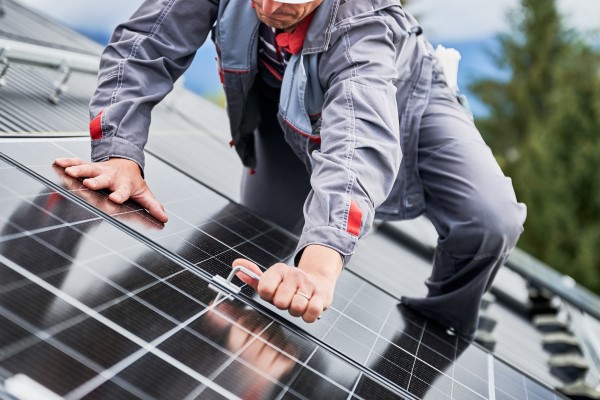What lies ahead in the National Construction Code?
With continued electrification of buildings, both residential and commercial, the NCC will increasingly become an important resource for electrical contractors. Lucy Finlay looks at what lies ahead.
The National Construction Code (NCC) consists of three volumes with numerous state-based variations and a structure that can seem daunting for anyone who does not live and breathe the Code. There are several different clause types. Compliance with the NCC is achieved by complying with the Governing Requirements and the Performance Requirements. Performance Requirements are satisfied by either a Performance Solution, a Deemed-to-Satisfy Solution – or a combination of both. So, while verification methods and deemed to satisfy provisions are optional, compliance with these sections is a way of demonstrating compliance with the performance requirements.
ADVERTISEMENT
The 2022 edition of the National Construction Code introduced new requirements such as electric vehicle (EV) charging whilst also increasing the performance requirements of other parts.
Part J is a key element in addressing energy efficiency performance requirements in the NCC. The objective of Part J is threefold, firstly to reduce energy consumption and peak demand, whilst also reducing greenhouse gas emissions. Finally, there is an objective to improve occupant health and amenity.
One important way this is achieved is to improve the layout of the building and associated building fabric. In 2022, this was done by introducing heating load limits, cooling load limits and a thermal energy load limit as performance requirements. Thus, reducing the amount of energy required to improve occupant health and amenity.
J9D4, a deemed to satisfy provision that was new for the 2022 edition, details requirements for EV charging equipment. Knowing that it can be cost-prohibitive to install such infrastructure after a building has been built if such infrastructure has not been considered as part of the design, J9D4 ensures that the core infrastructure such as distribution boards are provided. At the same time, it did not require that EV chargers be installed.
The Australian Building Codes Board (ABCB) have released their proposed changes to the next edition of the NCC, due to be published in 2025. Continuing the theme of building electrification, several key changes are proposed:
Requiring more switchboard capacity for a new house. The ABCB has recognised that houses may not be fully electrified when they are first built and the cost to upgrade a switchboard after initial construction is more expensive than making provision for future growth at the time of initial construction. As such, they are proposing to require a minimum number of spare circuit breaker slots to be reserved in the switchboard based on whether gas is utilised for domestic services. For houses that utilise gas for domestic services (i.e. hot water, cooking), eight empty single-phase circuit breaker slots must be provided. For houses that are fully electrified, a minimum of four empty single-phase circuit breaker slots must be provided.
Requiring infrastructure to support faster domestic charging of an EV in the garage. The National Electric Vehicle Strategy has predicted EVs will make up 50% of new vehicle sales by 2030. In response to this, the ABCB has proposed that houses that include one or more car parking spaces must include a dedicated single-phase sub-circuit that can support a load of 32A. The subcircuit must be terminated with either a labelled 15A GPO or dedicated Electric Vehicle Supply Equipment (EVSE).
New EV charging equipment requirement for a Class 3 building or a Class 5 to 9 building. The ABCB is proposing that commercial buildings that are either class 3 or class 5–9, will require EVSE to be installed that are capable of serving 20% of the daily driving needs of all occupants. This requirement is a performance requirement – it is really important to understand the deemed-to-satisfy requirement J9D4.
Facilities for EV charging equipment. J9D4 is proposed to be expanded in the 2025 edition. Electrical distribution boards dedicated to electric vehicle charging will now be required to be installed such that the final sub-circuit to the EVSE is no longer than 50m. Busduct solutions will also now be deemed to satisfy EVSE distribution requirements. This change will hopefully result in more simple installations for larger car parks. Regarding the EVSE requirement for class 3 and class 5 to 9 buildings, a car park with more than 40 car parking spaces will require a minimum of a 7kW EVSE to be installed for a least 10-15% of car parking spaces, depending on the exact class of building.
Requirements for on-site PV panels to be installed. Buildings that fall within the scope of Volume 1 will require solar to be installed. The PV system will have minimum peak output requirements that are dependent on the climate zone and building class. There are several exceptions to this requirement that need to be carefully studied. Where gas is used within the building, additional solar will need to be installed to offset the emissions resulting from the gas appliances.
While these proposed changes are a small but important step in our broader energy transition, they will impact many businesses in the electrical industry. You must keep abreast of the latest changes. The ABCB regularly hold events to help educate the industry on the NCC, including workshops when changes are proposed. The ABCB are currently conducting a period of public comment regarding these changes among many others slated for the next edition of the NCC. The public comment period will end on 1 July 2024.
-
ADVERTISEMENT
-
ADVERTISEMENT


